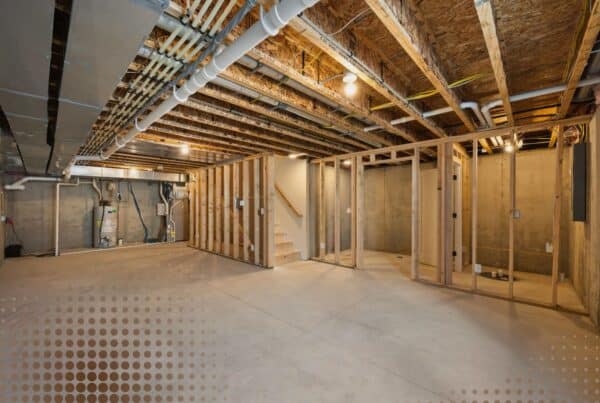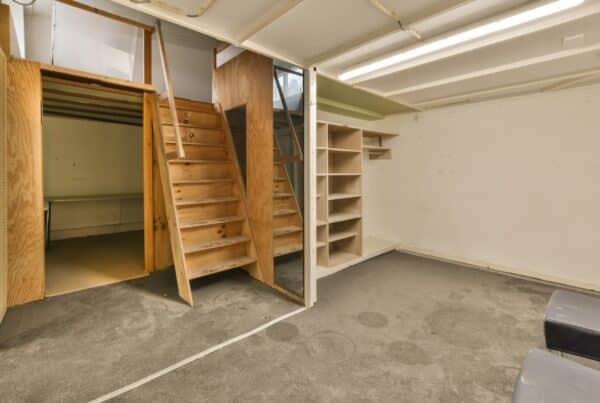Buying a home is a monumental decision, and concerns like bowing basement walls can quickly throw a wrench in your plans. In addition to being an aesthetic issue, these inward-curving walls can signify deeper structural problems. So, should you settle into a house with bowing in the basement walls?
In this article, we will explore the causes and solutions for this issue, as well as their stake in your home purchasing process.
The Risks of Bowing Basement Walls
Bowing basement walls usually occur due to external pressure from soil and water. Over time, this pressure compromises the structural integrity of the walls, leading to an inward curvature or even cracks. It is necessary to understand that bowing walls can lead to more severe problems if not addressed promptly.
Some of the risks associated with bowing basement walls include:
Structural instability: Bowing walls weaken the integrity of the foundation, which may compromise the entire structure of the house.
Water damage: Cracks in bowing walls can allow water seepage, leading to mold growth, humidity issues, and potential flooding in the basement.
Decreased property value: A house with significant structural concerns, such as bowing basement walls, may experience a decline in value.

Assessing the Severity
Before making a decision, it is essential to assess the severity of the bowing. Not all cases require immediate action, but it is crucial to consult with professionals for a thorough inspection and further guidance.
Factors to be considered when assessing severity include the angle of bowing, the presence and size of any cracks, the condition of the surrounding drainage system, and the overall impact on the home’s stability An experienced professional can evaluate the extent of the damage and provide appropriate solutions.
The Costs of Repairing Bowing Basement Walls
Repairing bowing basement walls is not a small feat, and the costs can be substantial. Professional repair methods, like wall anchors or carbon fiber straps, come with different price tags. Moreover, these structural issues may lead to a hike in your home insurance premiums, potentially adding to long-term financial burdens.
Carbon Fiber Reinforcement: Employing carbon fiber reinforcement is a common method to address this issue, with costs ranging from $350 to $1,000 per strap.
Wall Anchors: Wall anchors are another viable solution, with each anchor costing around $400 to $700.
Complete Wall Replacement: In severe cases where the structural issue is beyond basic repair, a complete wall replacement might be necessary. This is a costly endeavor, with prices soaring upwards of $30,000.
Foundation Repair: The broader scope of foundation repair, crucial to the home’s structure, typically ranges from $2,000 to $8,000, encompassing various methods to ensure the stability of the house.

Weighing the Options
Once you have a better idea of the situation at hand, it is time to evaluate your options. Depending on the extent of the damage and your budget, you may consider:
Negotiating the Price
If you are considering buying a house with bowing basement walls, you can use this issue as leverage during negotiations. Obtaining estimates from contractors for repair costs can help you negotiate a lower purchase price based on the necessary repairs. However, keep in mind that not all sellers may be willing to adjust the price accordingly.
Walking Away
In severe cases where the bowing basement walls pose significant risks or the cost of repairs is prohibitive, walking away may be the best option. It is crucial to prioritize your safety and financial well-being when deciding on a property with substantial structural concerns.
Other Recommended Maintenance
Besides addressing the bowing basement walls, it’s wise to keep an eye on other maintenance aspects of such homes. Ensure proper drainage to prevent water accumulation around the foundation. Regularly check for cracks in walls and foundation, sealing them to prevent water intrusion. Monitor basement humidity levels to avoid mold, and consider routine inspections by professionals to catch potential issues early.
When to Call a Professional About Bowing Basement Walls
Significant wall displacement, horizontal cracks, and rapid inward bowing indicate a need for professional intervention. Before purchasing, have a professional evaluate the extent of damage and repair costs. They will offer warranty-backed solutions, adhere to local building codes, and ensure safe, reliable repair work.
Avoid DIY solutions, which can exacerbate problems and lead to costlier repairs in the long run. Professionals provide accurate diagnosis and repair, safeguarding your home’s longevity and safety.
Conclusion
Purchasing a house with bowing basement walls demands a well-informed decision backed by professional advice. It’s essential to weigh the pros and cons, understand the repair costs involved, and consider the long-term implications on the structural integrity of the home. As you navigate this significant investment, don’t hesitate to seek expert guidance.
If you’re considering buying a home with this condition or are concerned about your basement walls, don’t wait to get a professional opinion. At Buckeye Basement Solutions, our team is here to provide the clarity and confidence needed to make the best home-purchasing decision for you.



